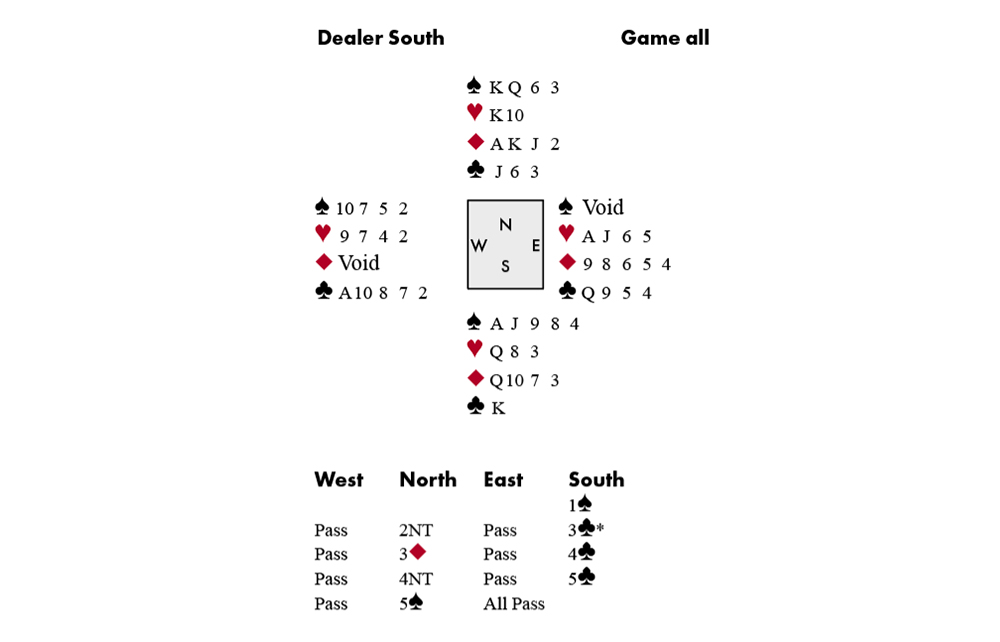Many bids and plays have been named after former great players. They may not have invented the bid as such, but they have coined it and made it famous. Names like Samuel Stayman and Easley Blackwood will live on for as long as the game is played.
In 1929, Theodore Lightner gave his name to the ‘Lightner double’, used to request an unusual lead – often against a slam – when we hope to score a ruff or need dummy’s first bid suit led. This is well-known. What is rather less well-known is the ‘reverse’ Lightner double, occurring when you are on lead but want to alert partner that something unusual is needed to beat the contract. This hand popped up just the other night:
North-South used 3♣ after the Jacoby 2NT (there we go again) to show a minimum hand, and 4♣ was a cue bid – enough for North to wheel out Blackwood, South showing one Ace. Against 5♠ West led the ♥9. East won the Ace and played a Club to West’s Ace but that was it.
‘I could ruff a Diamond,’ said West after the hand, but she hadn’t made any effort to tell partner about it in the auction. As East is known to have a ‘key card’, West should double 5♠ to alert partner to the fact that something is going on. She can then cash the ♣A followed by a high Heart, and will soon score a ruff.
Of course, East could have the Ace of Diamonds instead and then the contract makes, but that’s a risk worth taking for the chance to beat it.






Comments